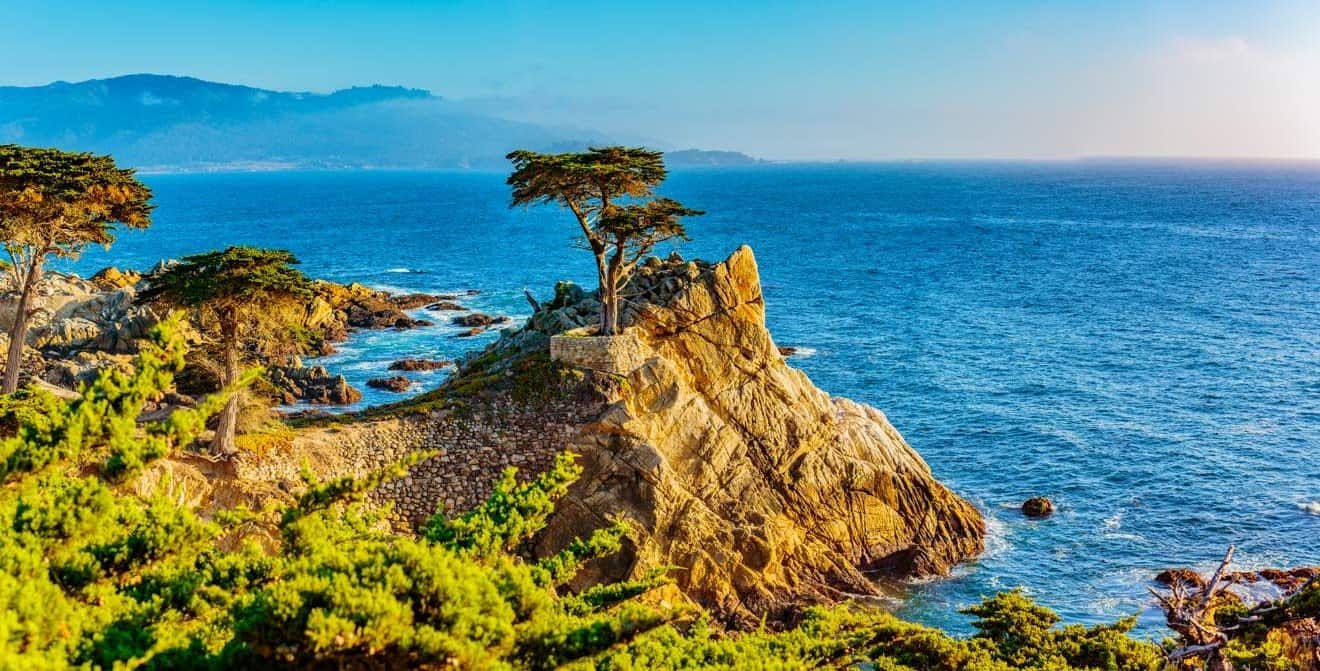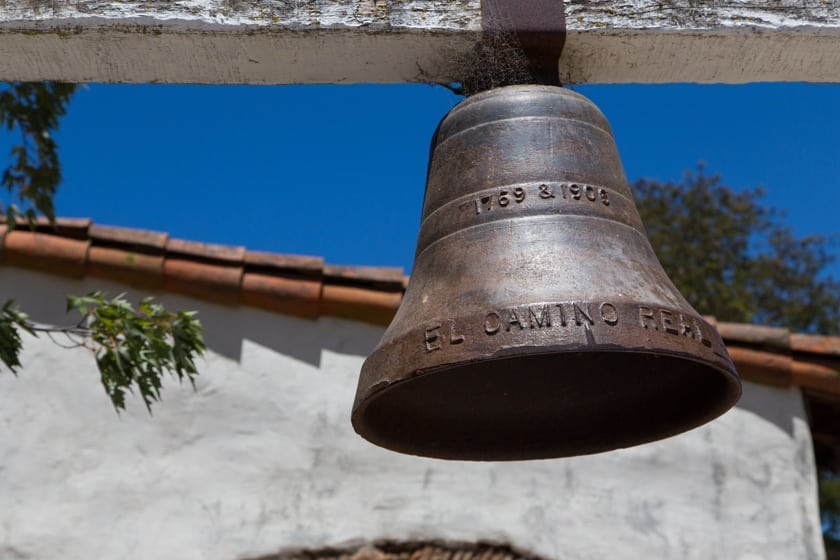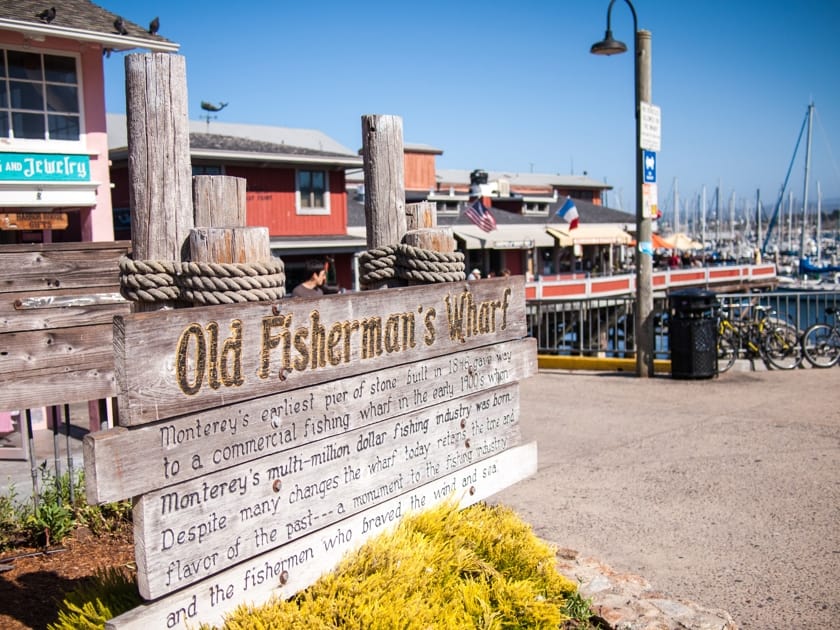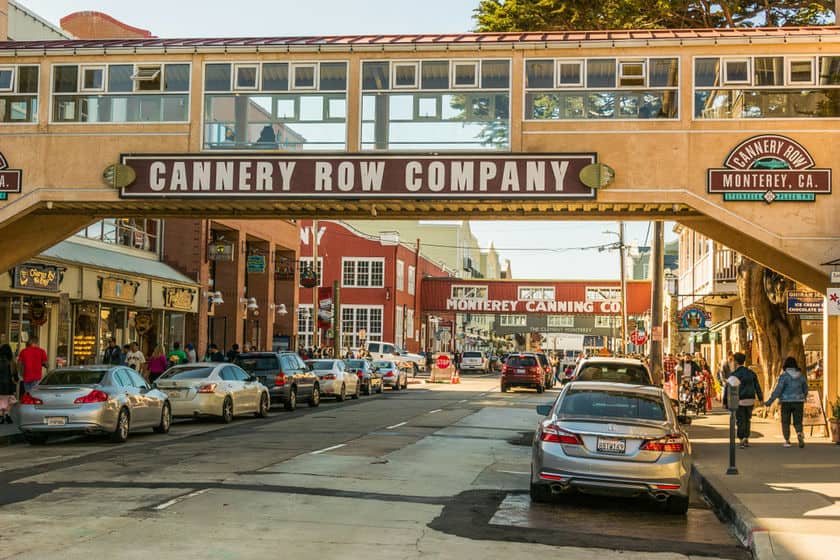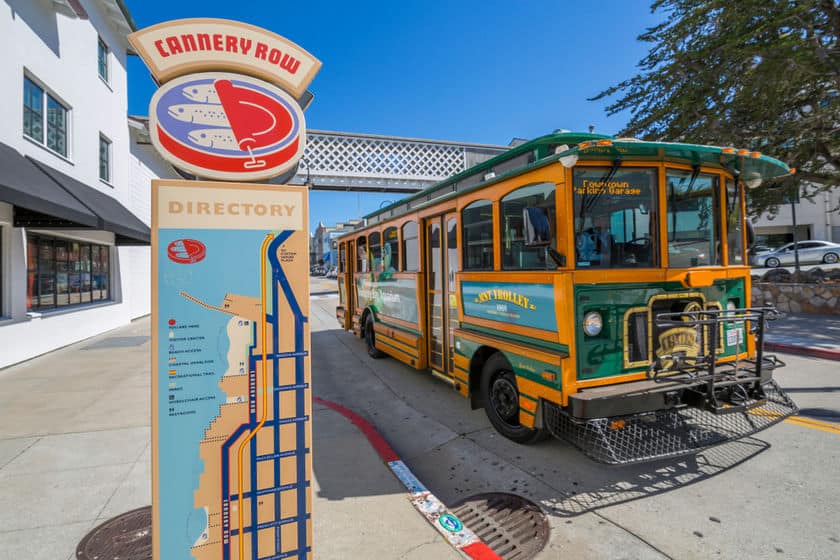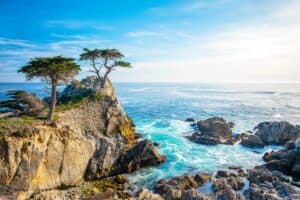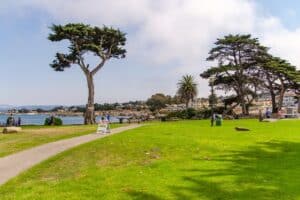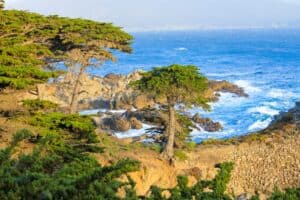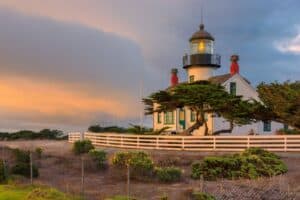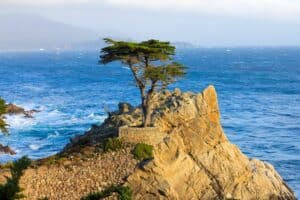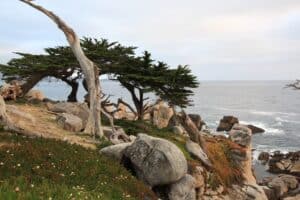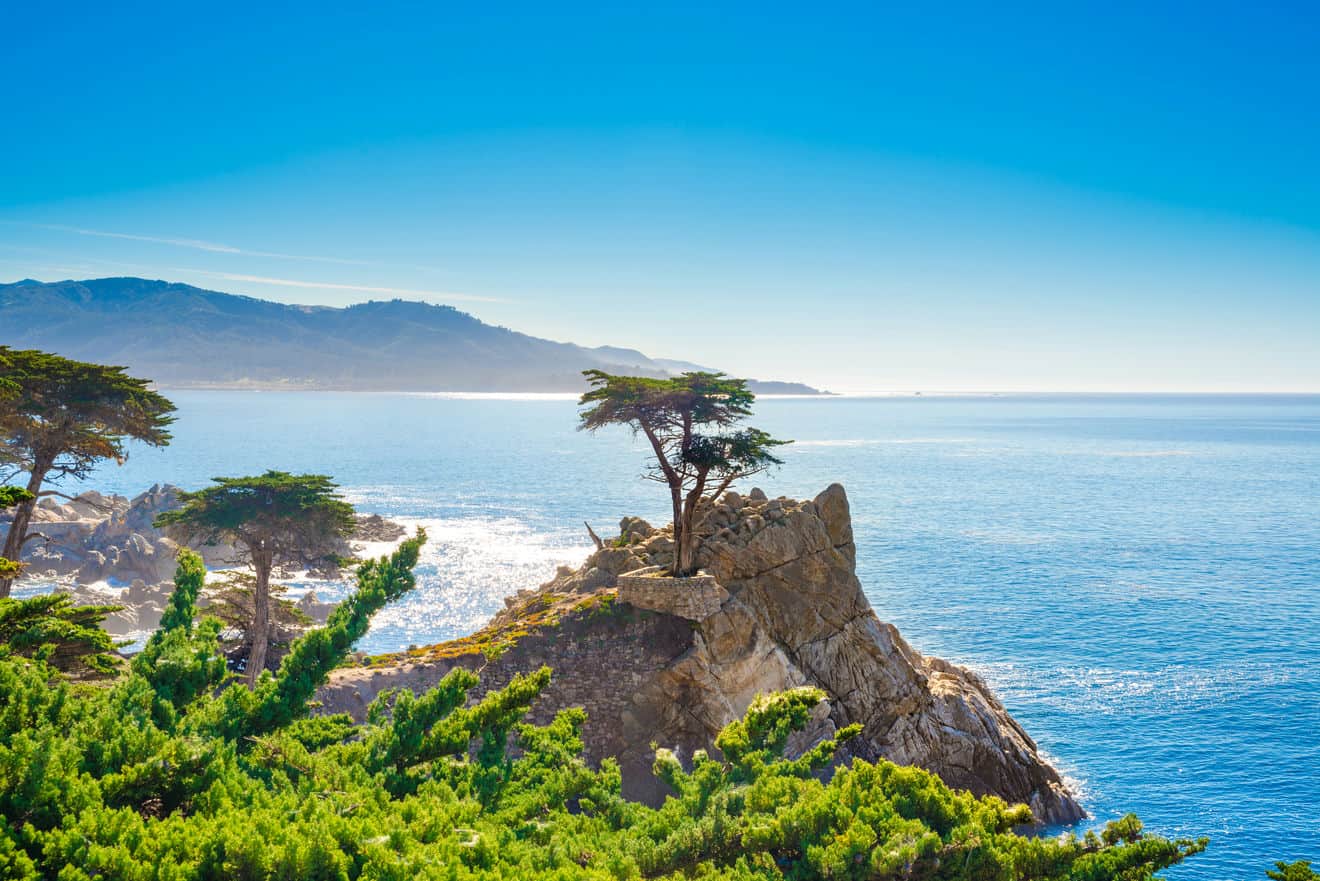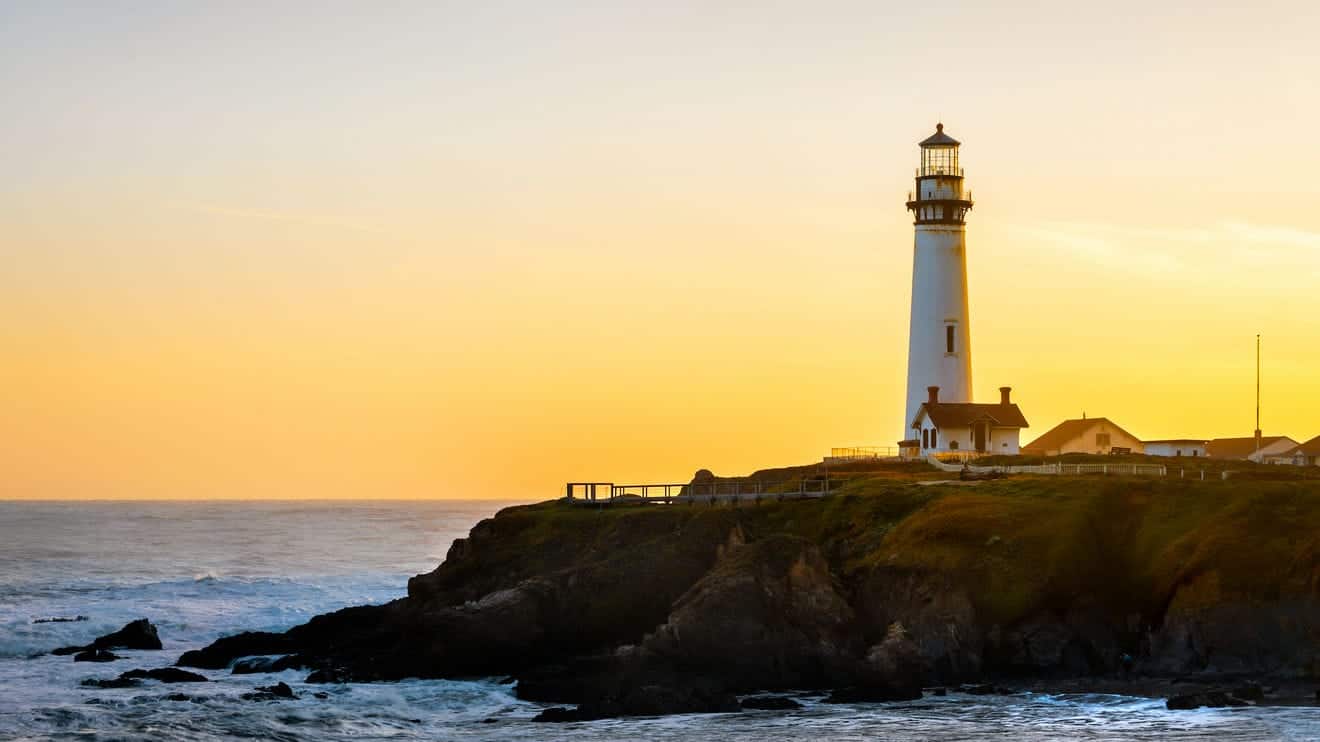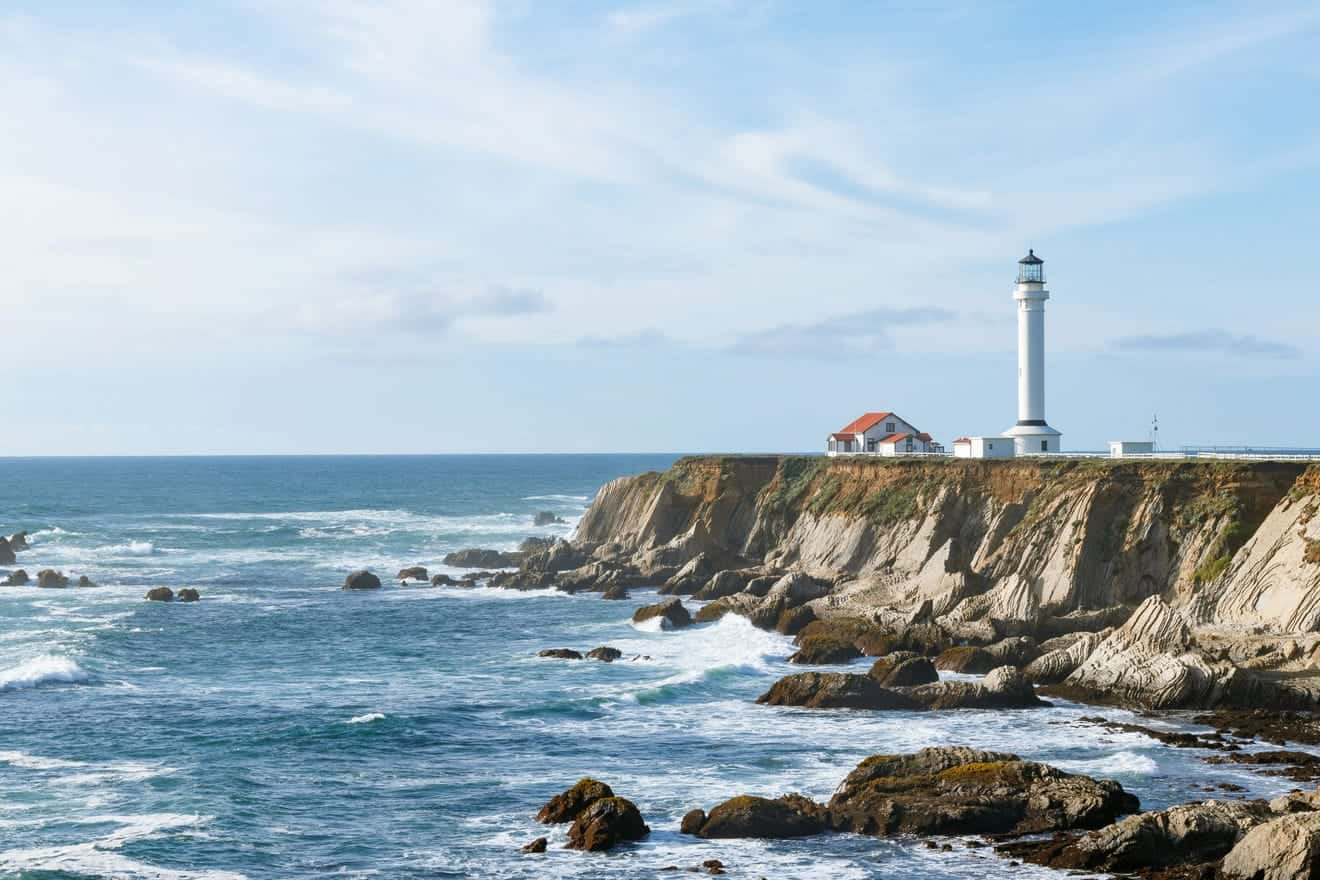Monterey, as a consequence of its fortunate location, is one of the most popular destinations on any trip to California. Whether you’re driving along the coast on the magnificent Highway 1, visiting San Francisco, or heading straight for Yosemite National Park, you should consider spending a day on the Monterey Peninsula.
In this article, we’ll take a look at what the whole area has to offer and will try to answer these questions: what are things to see in Monterey? How many days should you spend here? What is the best way to visit the city and the Monterey Peninsula? What attractions should you prioritize if you are just passing through? Which area in Monterey should you choose for an overnight stay?
Contents
Monterey: Information and Brief History
The name Monterey dates back to 1602 when the explorer Sebastián Vizcaíno named the entire bay Puerto de Monterrey in honor of the viceroy of New Spain at that time. However, the city was founded later in 1770 when the missionary Junípero Serra established Mission San Carlos Borromeo there, and when the explorer Gaspar de Portolà established the Presidio of Monterey to defend the harbor from invasions.
The city of Monterey remained under Spanish control until 1821 when it passed to Mexico following the independence achieved in the war against the Spanish. Monterey thus became the capital of Mexican California and remained so until 1849 when California was annexed by the United States after the Mexican-American War.
During this period, the city played an important commercial role as it was the only taxable goods entry port for California (all sea shipments had to pass through the Custom House, the oldest government building in the state, which can still be visited as one of the most important stops on the Monterey Path of History).
An important historical event was the Battle of Monterey on July 7, 1846, during the Mexican-American War. It was on this day that Commodore John D. Sloat of the United States Navy raised the American flag over the Monterey Custom House, thus claiming California as United States territory.
The historical significance of Monterey should not be underestimated. It’s worth noting that not only was the first theater in the state founded here, but also the first brick house, the first publicly funded school, the first public building, the first public library, the first printing press, and the first newspaper in California. Some of these buildings have been preserved to this day and are part of the aforementioned Monterey Path of History.
From a cultural and artistic standpoint, Monterey has much to offer as it was a gathering place for important painters of the en plein air and tonalism styles, as well as literary figures such as John Steinbeck and Robert Louis Stevenson. Finally, Monterey was the site of the famous Monterey Pop Festival, the hippie event that preceded Woodstock and attracted over 200,000 people in 1967.
Where is it located and how to get there?
Monterey is located on the coast of California, within the Monterey Peninsula, an area known for its natural beauty, which includes the towns of Carmel by the Sea, Pebble Beach, Pacific Grove, and, of course, Monterey. It can be reached by driving along Highway 1 along the coast or by taking the 101, the road that connects San Francisco and Los Angeles inland, and connects to Monterey via State Route 68.
Monterey is approximately 120 miles south of San Francisco and is about a 40-minute drive from Big Sur and a 3.5-hour drive from Yosemite National Park (here’s an interesting itinerary from Monterey to Yosemite).
How Many Days Should You Spend in Monterey?
Monterey, located 99 miles south of San Francisco on the northern edge of the scenic Big Sur coastline, rests on the Monterey Peninsula, a fascinating area with bluffs, cypress trees, and cliffs overlooking the ocean.
It may take at least two days to visit the various attractions in the city and the surrounding area, however, due to the numerous stops to be made on a trip to California, people tend to spend no more than one day here. If this is the case for you, I recommend that you spend more time exploring the Monterey Peninsula rather than tour the city.
Best Things to Do in Monterey
Here is a selection of the most important attractions to visit in Monterey
Monterey Bay Aquarium
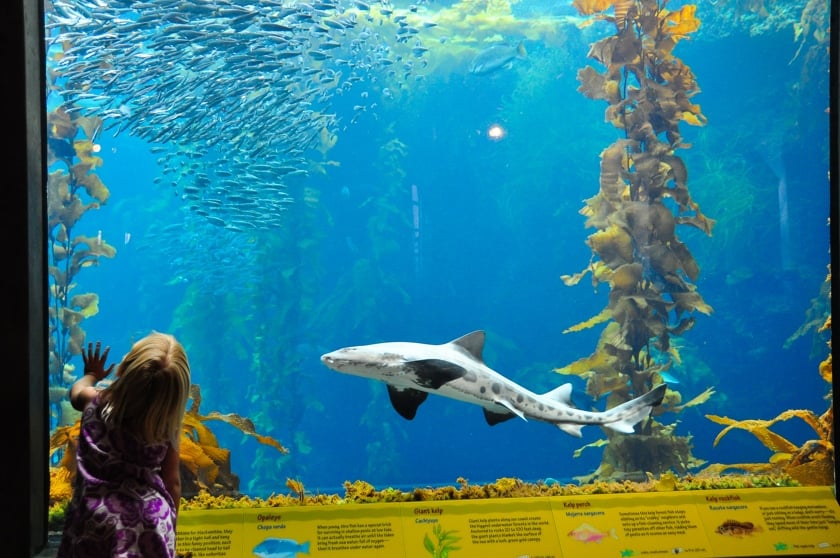
If you are in Monterey during the high season, I recommend that you visit the Monterey Bay Aquarium on a weekday because during weekends it is particularly crowded and finding parking is not easy. The aquarium is open from 10:00 am to 5:00 pm.
Path of History
The town of Monterey boasts an unexpected historical importance. As mentioned before, it served as the capital of California for a certain period, and it still preserves interesting testimonies of its ancient grandeur, especially in the form of historic buildings and old adobe houses.
Among the things to see in Monterey, you will find some of the most beautiful structures from California’s Hispanic past, all concentrated within a few blocks along the waterfront. This is known as the Path of History, a route that connects numerous historical sites in the city, all gathered under the Monterey State Historic Park.
To follow the historical itinerary, you simply need to follow the yellow tile markers on the street, which guide you to all the points of interest, or you can simply use the map provided on the official website. Many of the sites are privately occupied, but you can still enter the state-owned properties without paying an entrance fee.
The most interesting buildings to see are:
- Larkin House (1834), the first house built in the city in a colonial style.
- Old Custom House (1827), the oldest government building on the West Coast, located in Custom House Plaza, not far from the pier.
- Colton Hall Museum and Jail (1849), still furnished as it was during the California Constitutional Convention, housing one of the earliest maps of the West Coast.
- San Carlos Cathedral (1770-1794), founded by Father Junípero Serra as the Monterey Mission, this beautiful church is the oldest building in the city and part of El Camino Real, the route of the Spanish missions along the California coast.
- Pacific House Museum (1847): originally used as a storage facility by the United States Navy, this lovely adobe building was later transformed into a courthouse, pub, church, and more. Today it houses a museum on the history of the city.
- Stevenson House (1836): was the home of the famous writer Robert Louis Stevenson, who lived here in 1879. It is now a museum.
Other interesting stops along the itinerary include Doud House, Presidio of Monterey Museum, O’Donnell Library, Old Whaling Station, and Vizcaino-Serra Landing Site.
Fisherman’s Wharf
Here we are in one of the most touristy areas, the Old Fisherman’s Wharf in Monterey, which is accessed from a small square in front of the Custom House. In this area, not far from the Monterey Harbor Monument, sea lions often gather, providing a favorable opportunity to observe them up close.
The Fisherman’s Wharf may not be as charming as its counterpart in San Francisco (or even just Pier 39), but you can enjoy a pleasant walk along the pier while sampling some clam chowder offered by the vendors who will try to entice you into their restaurants. You can also explore the various shops on the pier and embark on a whale-watching tour.
Cannery Row
Cannery Row, the street where the fishing industry once thrived, was immortalized by John Steinbeck in one of his novels, depicting the life and atmosphere of the place in the 1930s. Now it is bustling with storefronts, shops, and restaurants, as well as tourists. Among the points of interest to include in your visit, in addition to the famous Monterey Bay Aquarium, are the following:
- Cannery Row Worker Shacks (coordinates), historic buildings located on Bruce Ariss Way, a side street off the main road, where the fishery workers used to live.
- Cannery Row Monument, a sculpture on the waterfront created by Steven Whyte, depicting important figures from Monterey, including John Steinbeck and marine biologist Ed Ricketts.
- Pacific Biological Laboratories, a small museum that was once the site of an important fish packaging company (La Esparanza) and played a significant role in the work of Ed Ricketts, author of pioneering studies in marine biology and a friend of John Steinbeck.
- Cannery Row Antique Mall, a true haven not only for antique enthusiasts but also for nostalgics seeking objects that have significantly marked the past decades (cameras, toys, and various memorabilia).
- Steinbeck’s Spirit of Monterey Wax Museum, a museum dedicated to Monterey’s most famous historical figure, which unfortunately has closed its doors and we do not know if it will reopen.
Monterey Trolley
Most of the mentioned historical attractions are located near the route of the free Monterey Trolley, which operates during the summer with departures every 10-15 minutes, serving Downtown Monterey, the pier, and Cannery Row. Here is a photo with the route map:
Monterey Beaches
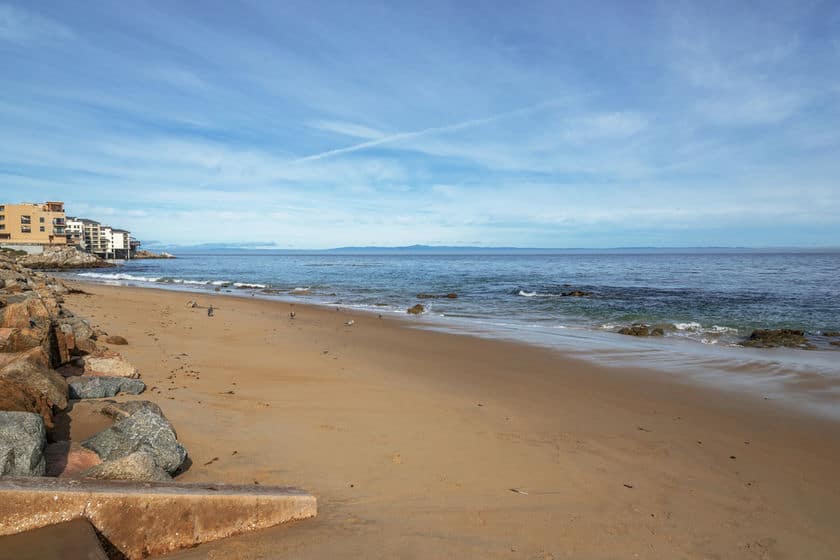
Don’t expect the long California beaches with muscular surfers and crowds of tourists in Monterey. Instead, you will find sunny stretches and small coves. Here are the beaches within the town limits, without mentioning the beaches in neighboring areas (Pacific Grove, Point Lobos, etc.): the largest beaches in Monterey are Del Monte Beach and Monterey State Beach, offering pristine sandy expanses, with the exception of Monterey Tides, the only hotel built directly on the beach near the border with the town of Sand City.
Heading west, you will come across the coves of San Carlos Beach, near the Coast Guard Pier and Breakwater Cove Marina, and Macabee Beach, close to the Cannery Row Monument. The first of the two beaches is the most interesting, especially for scuba diving, thanks to its rich kelp forests, fish, and marine invertebrates, as well as the opportunity to spot sea lions, which often rest on the surrounding rocks.
Visit Monterey Peninsula
The main reason to stop in Monterey is to visit its surroundings. The best way to explore the peninsula is to take a nice drive along 17-Mile Drive, one of the best scenic roads in the United States. You can view 17-Mile Drive on the map below:
The road takes you to some very charming places, where you can make quick stops:
- First stop in Carmel, a small picturesque city. We also wrote an article about it.
- Pebble Beach is an incredible place with golf courses, villas, twisted trees, and romantic seascapes. If you’re in the area, stop by the Lone Cypress Tree, a solitary cypress that has become the subject of numerous paintings, pictures, and postcards.
- In Pacific Grove, you will find many historical buildings and a jagged and breathtaking coastline. I definitely recommend visiting the beautiful beach at Lovers Point and the historic lighthouse at Point Pinos. Read our tips here: Things to do in Pacific Grove.
If you have a little more time, then you can go for a drive on the beautiful Highway 1, one of the most famous scenic roads in California, and head straight to Big Sur, where the most breathtaking views on Highway 1 are found. You can find all the information in our article about Big Sur.
Road Trip on 17-Mile Drive: Photo Gallery
Lodging in Monterey
My advice is not to limit your search to the city of Monterey. Instead, also look on the Monterey Peninsula, so you will have a greater selection and a higher chance to find accommodations at low prices. Here are some links where you can check the prices of accommodations at different locations in the area:
- List of Hotels in Monterey
- List of Hotels in Carmel
- List of Hotels in Pacific Grove
- List of Hotels in Pebble Beach
Finally, click the link below to find interesting activities and things to do in the Monterey Peninsula:
